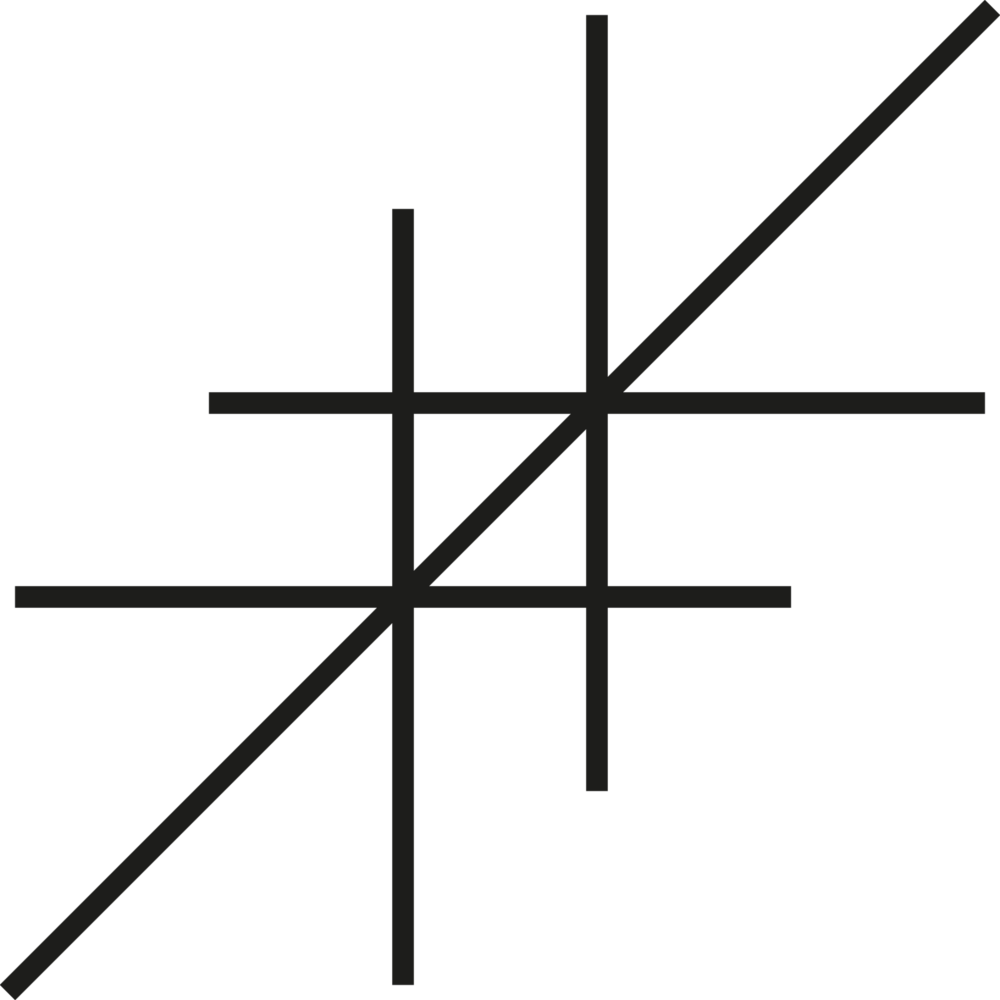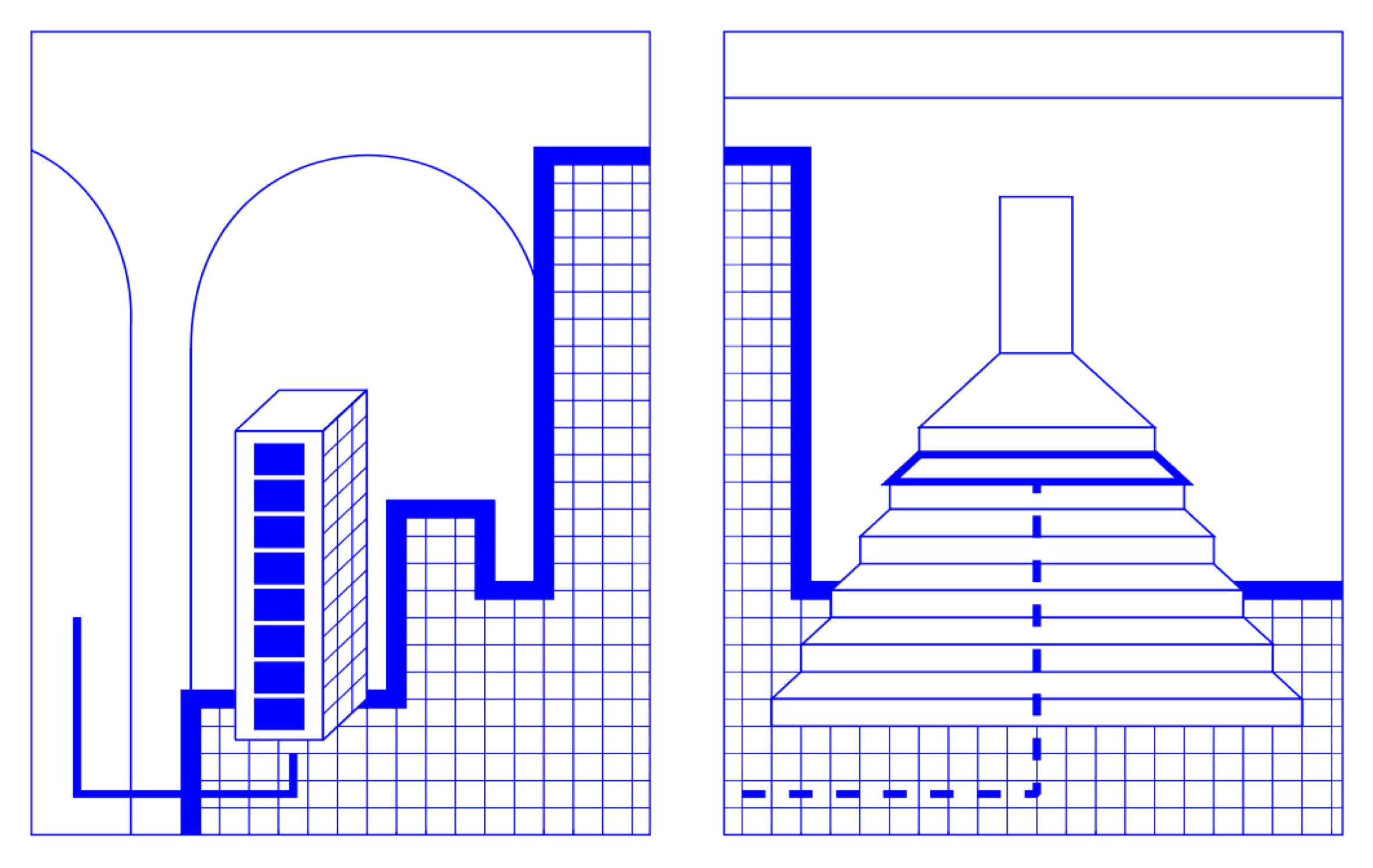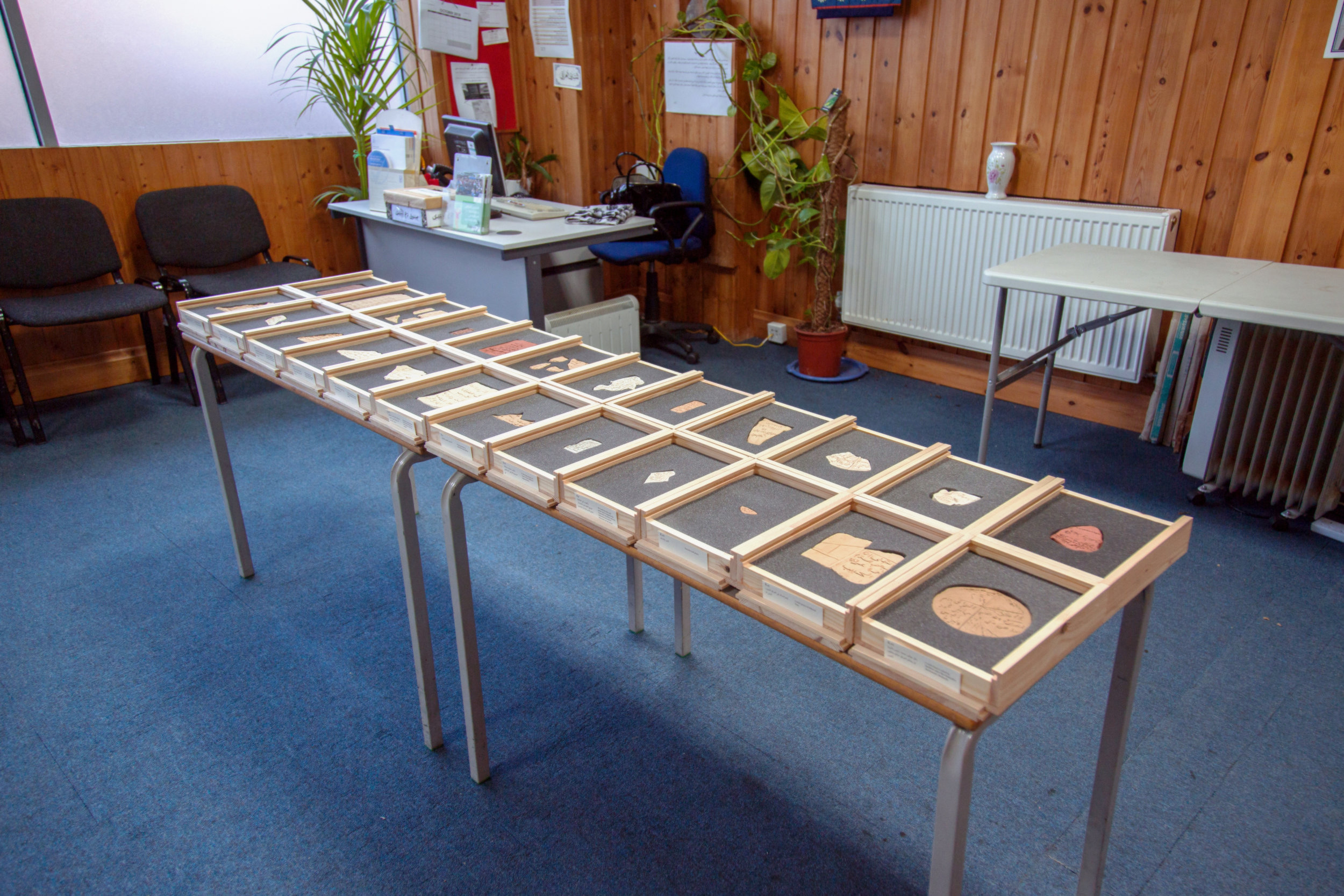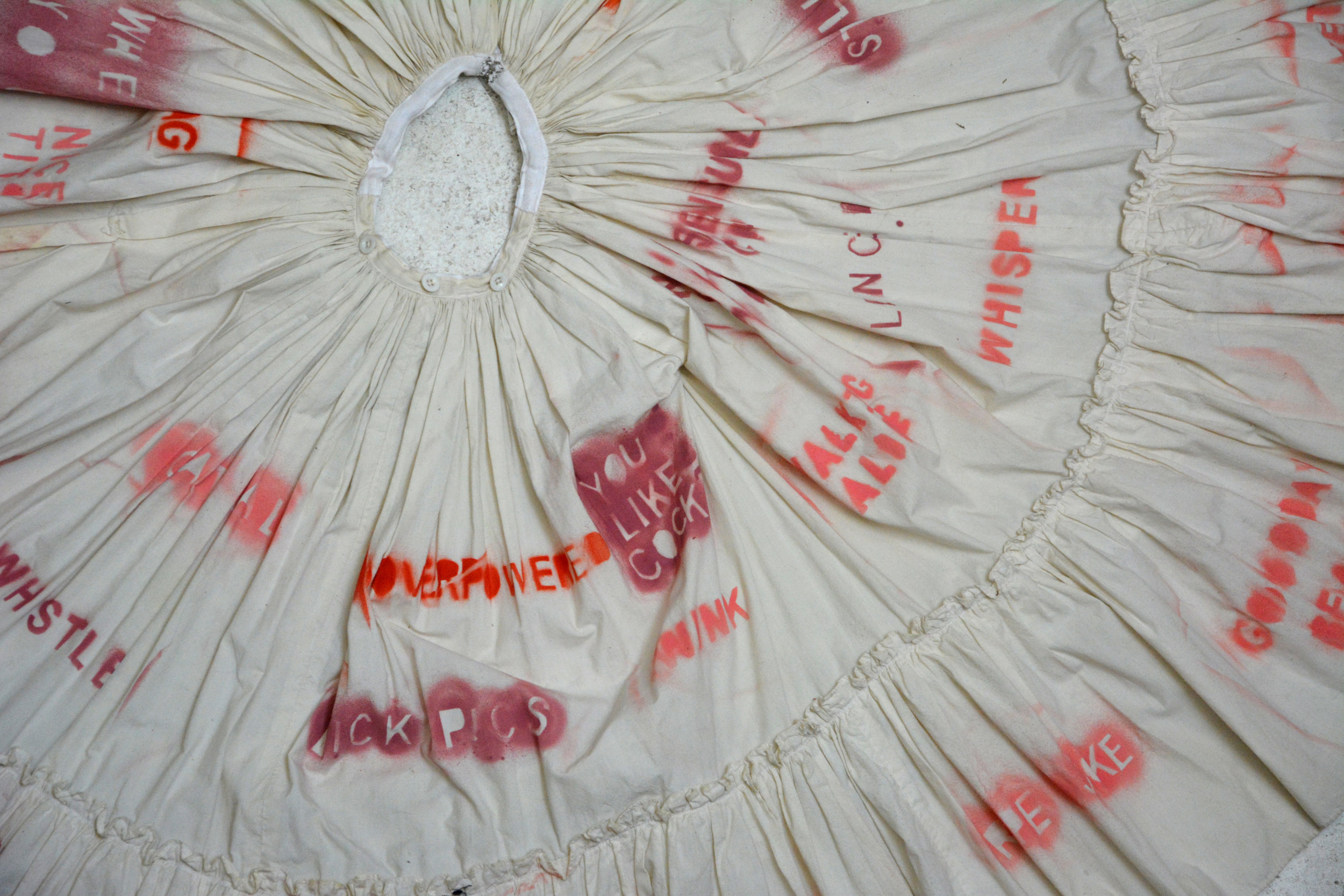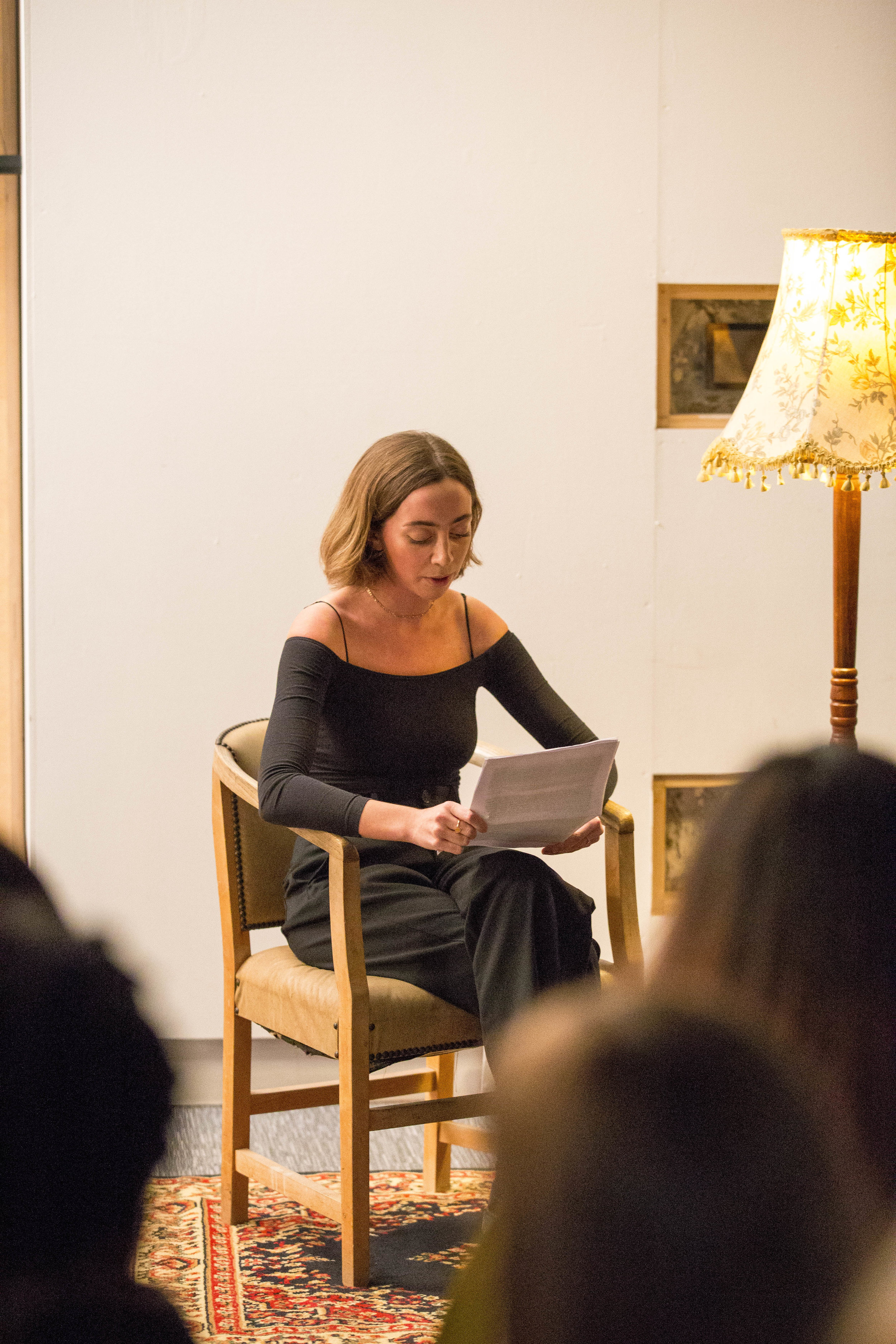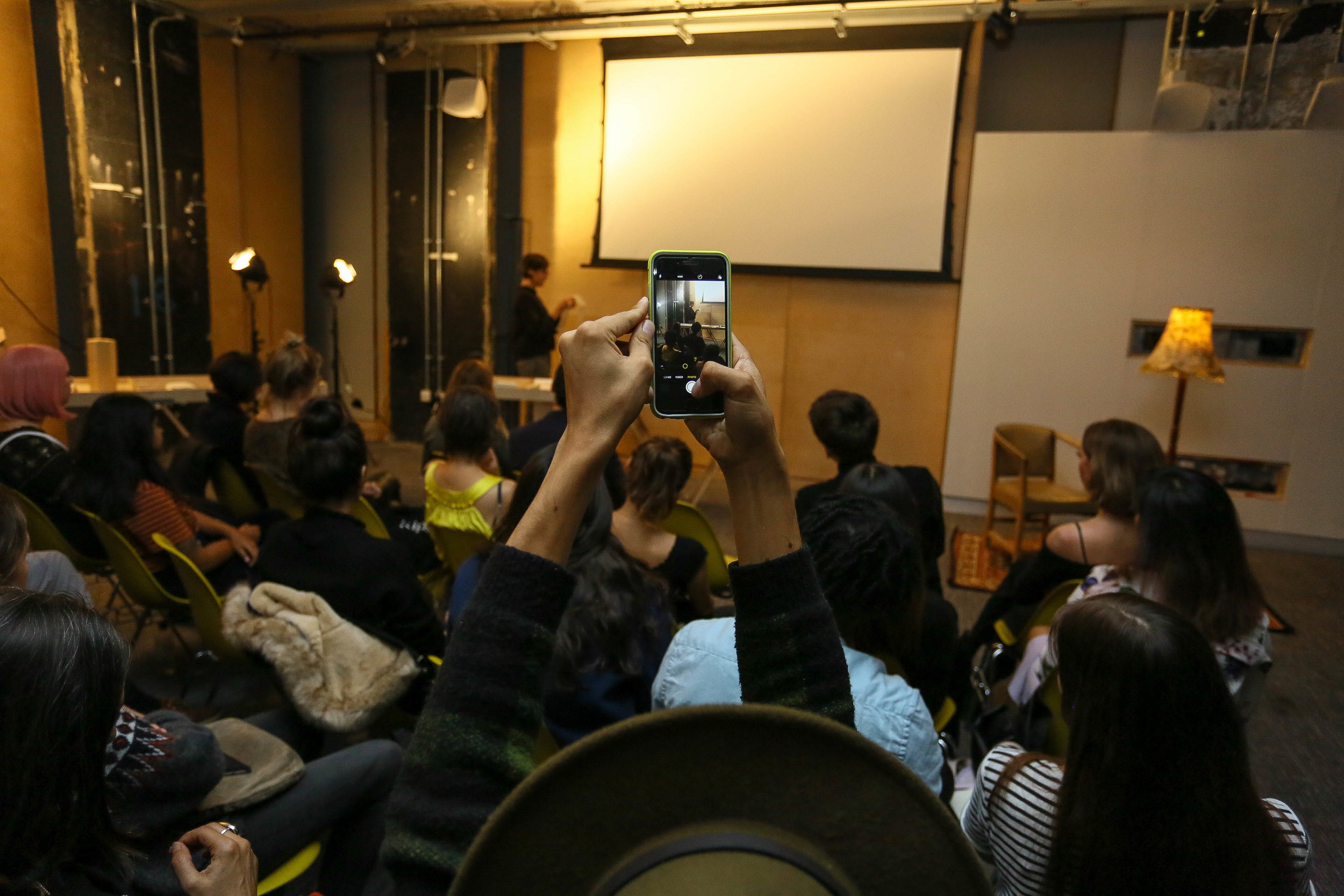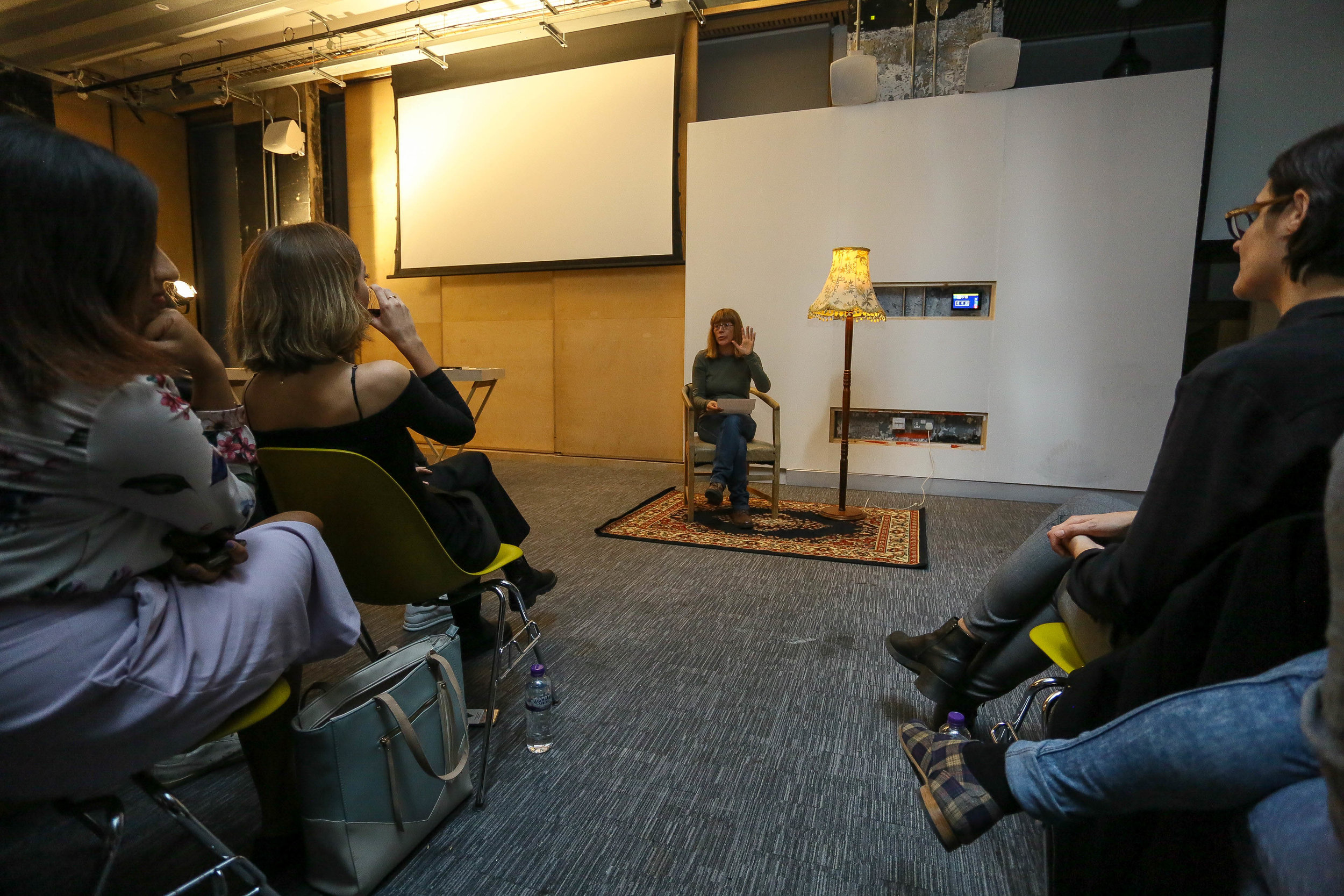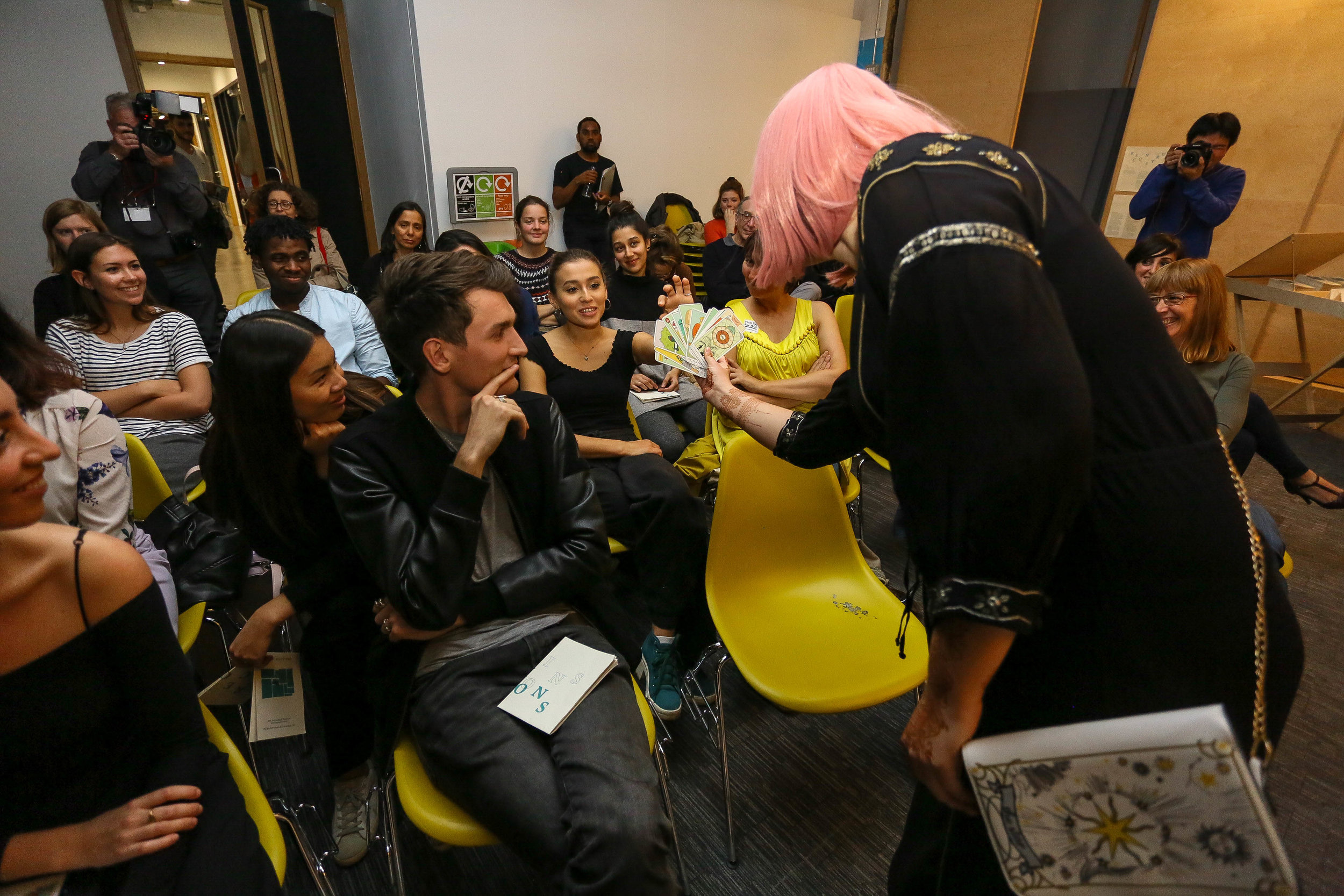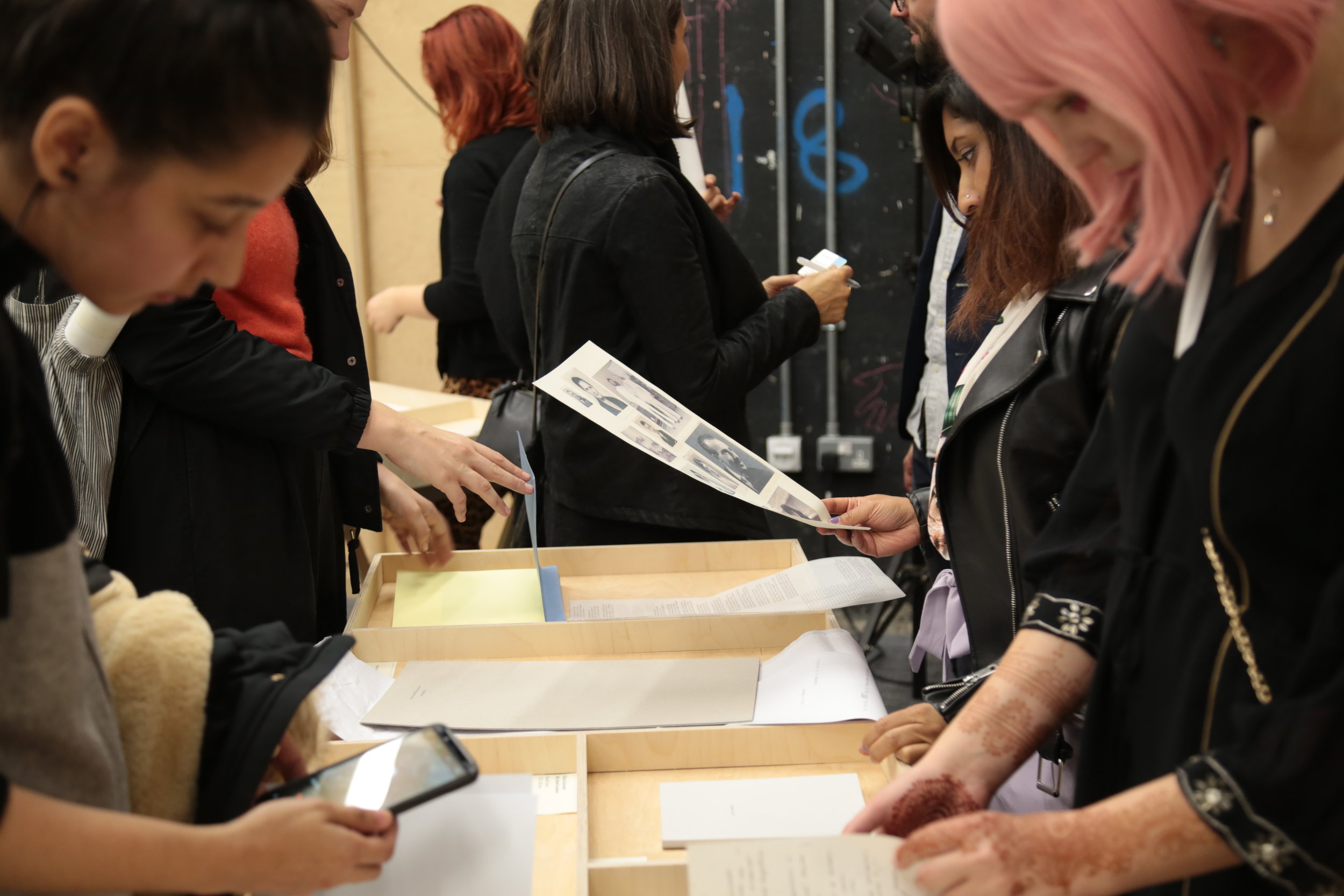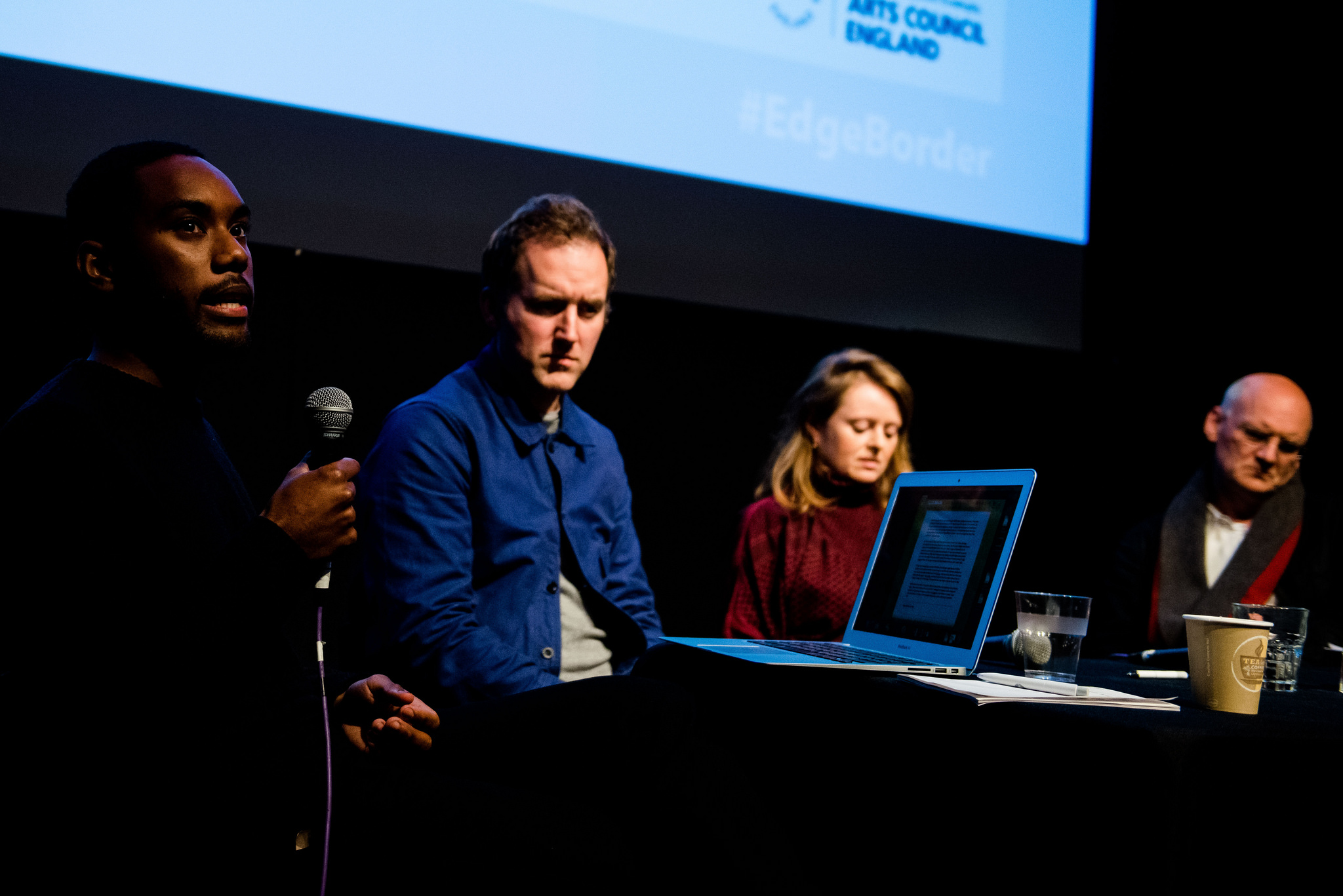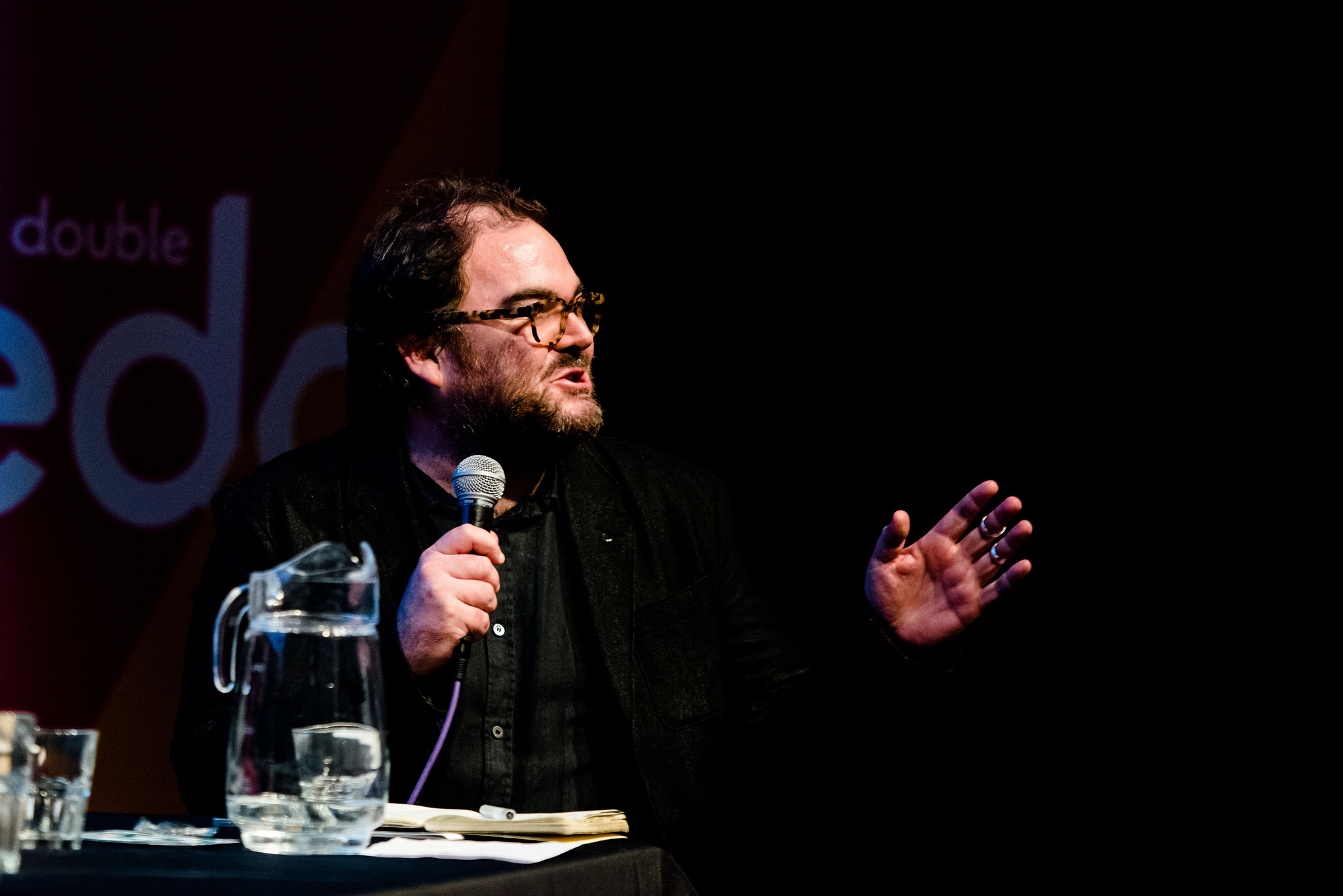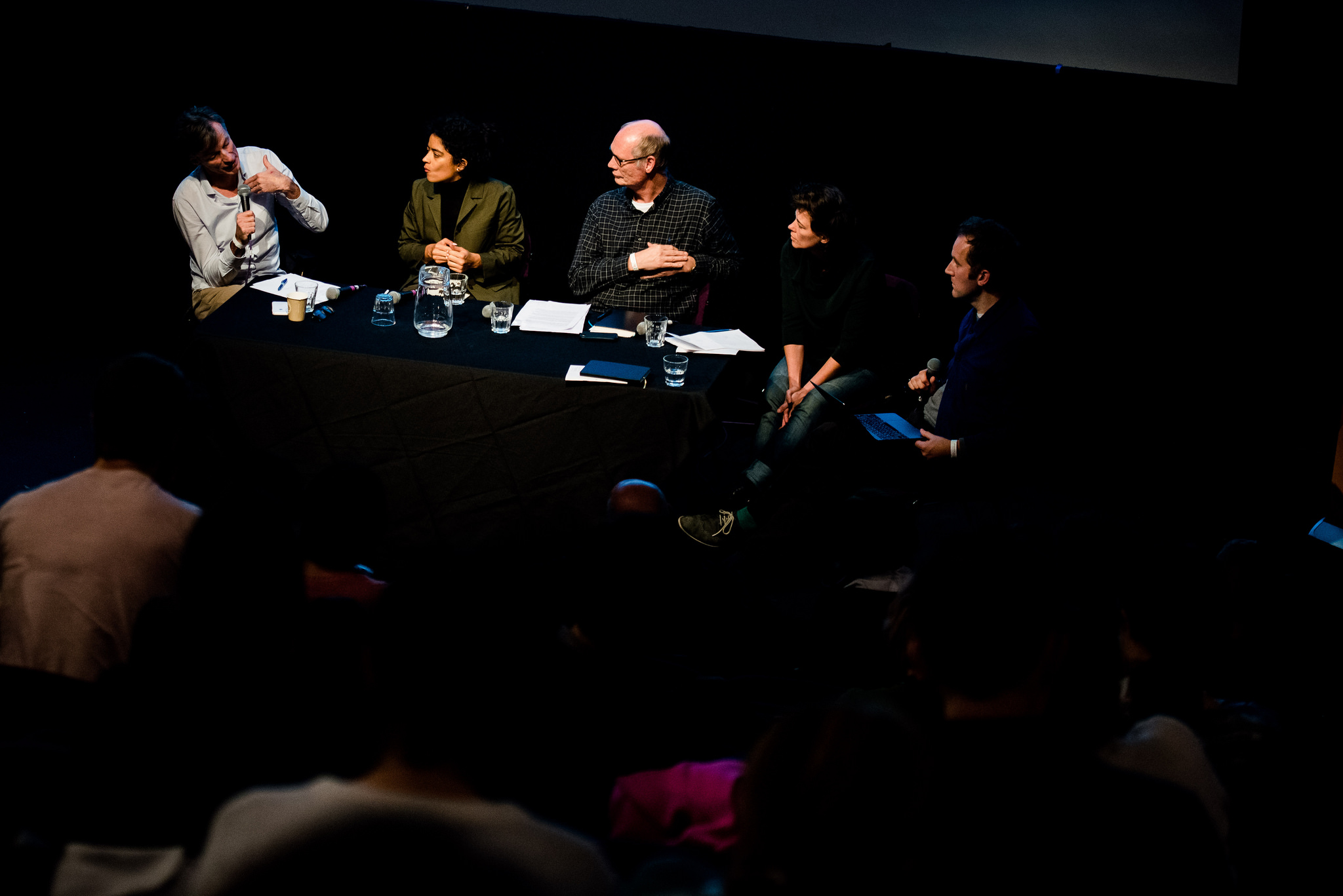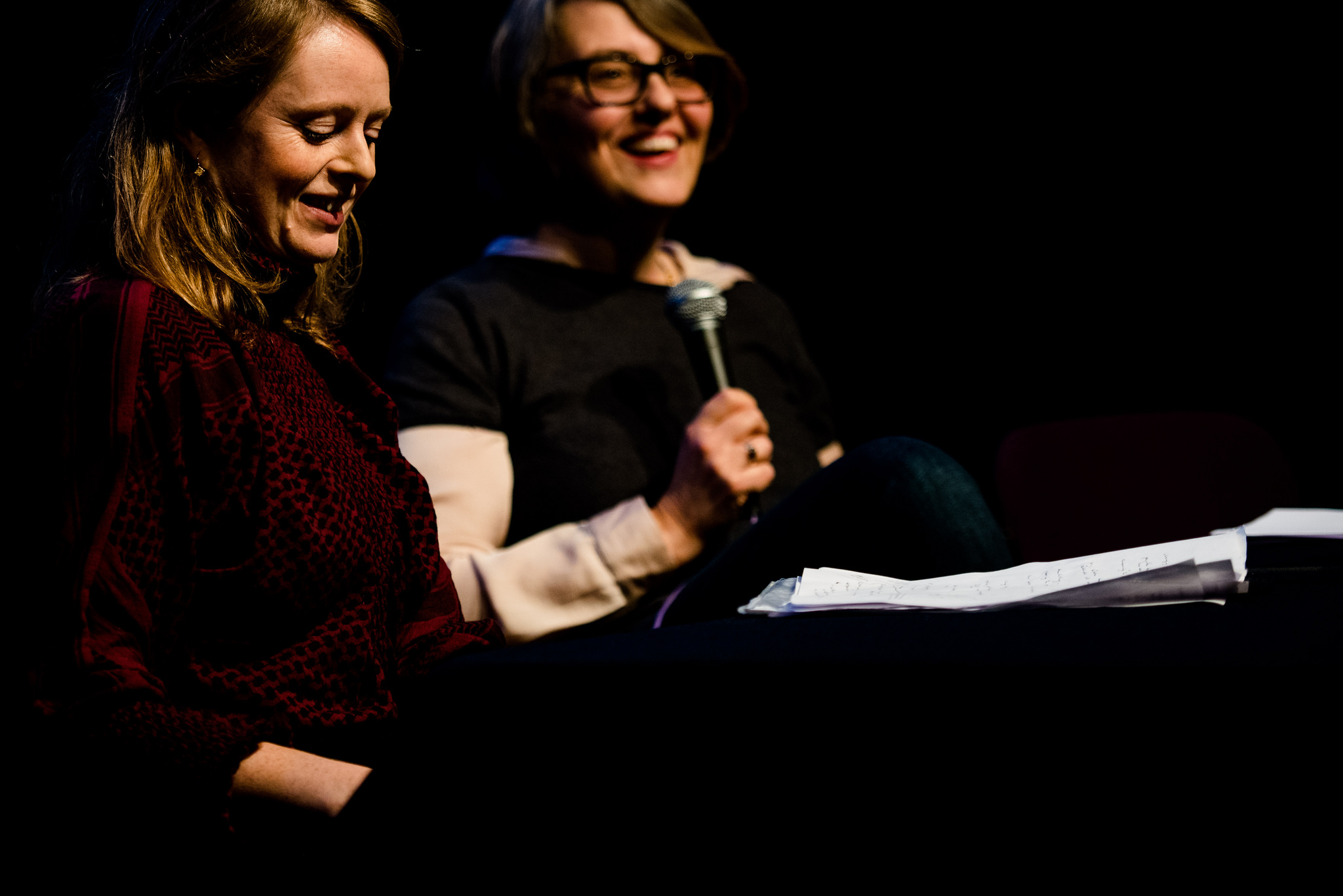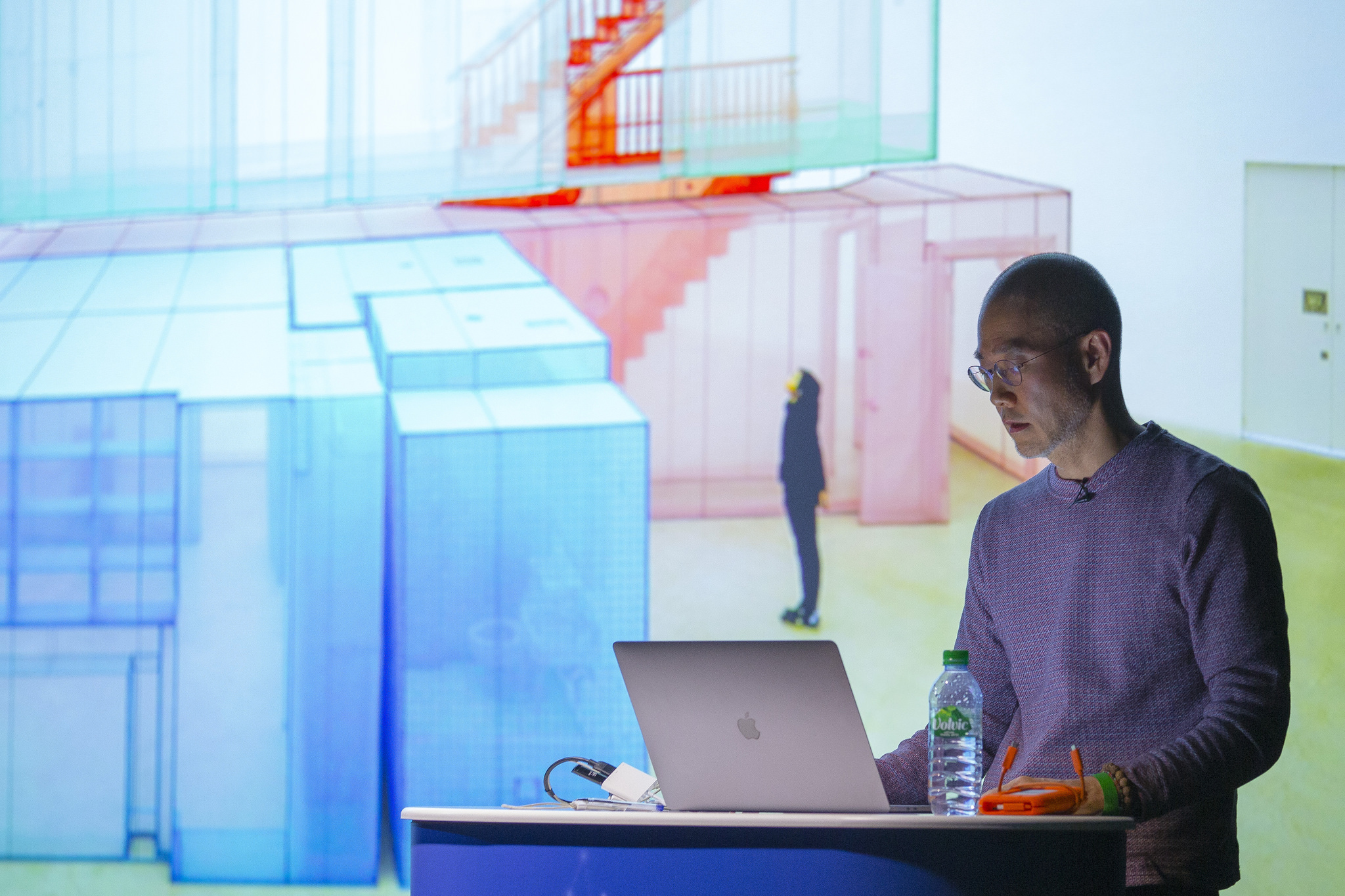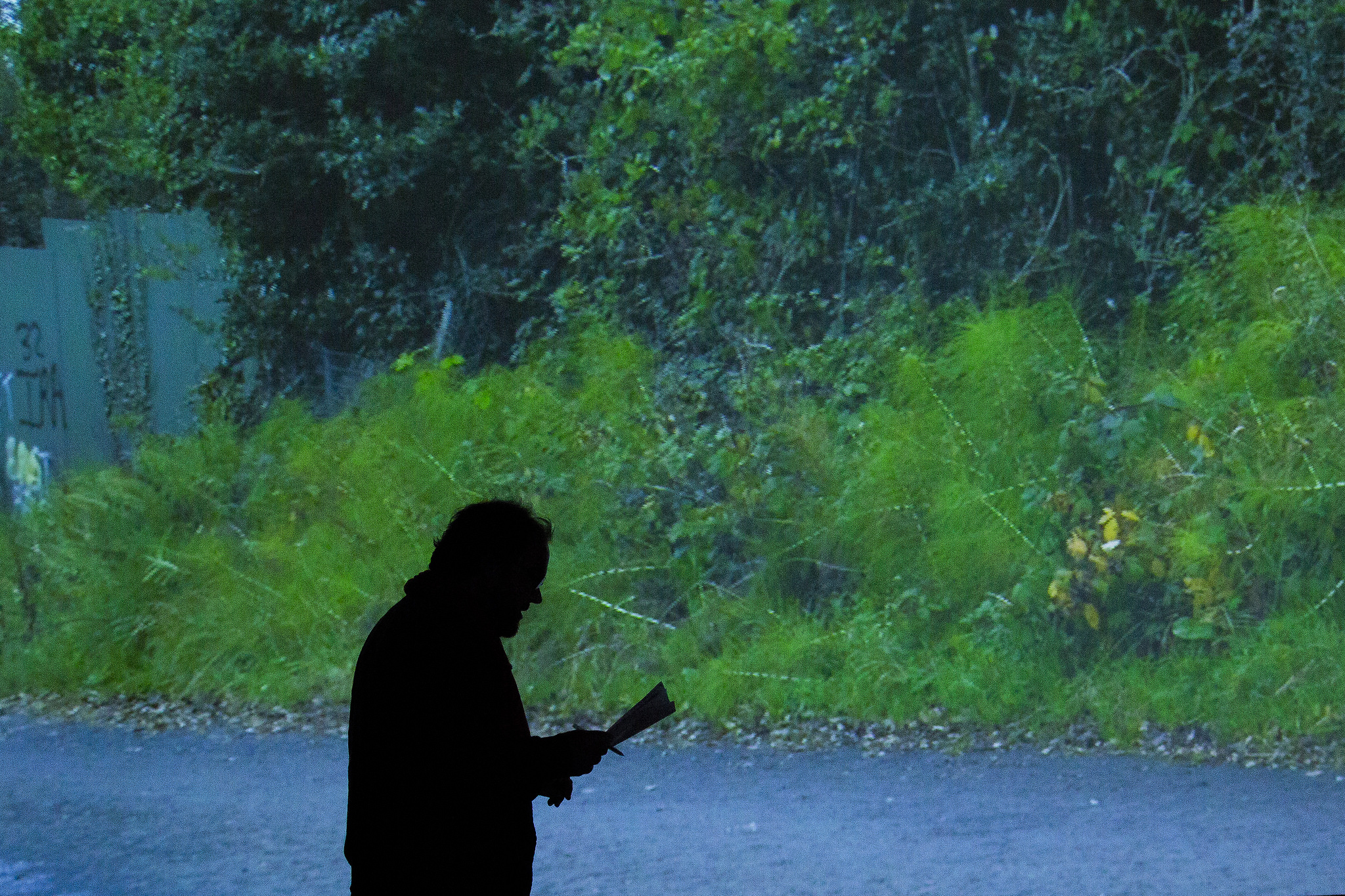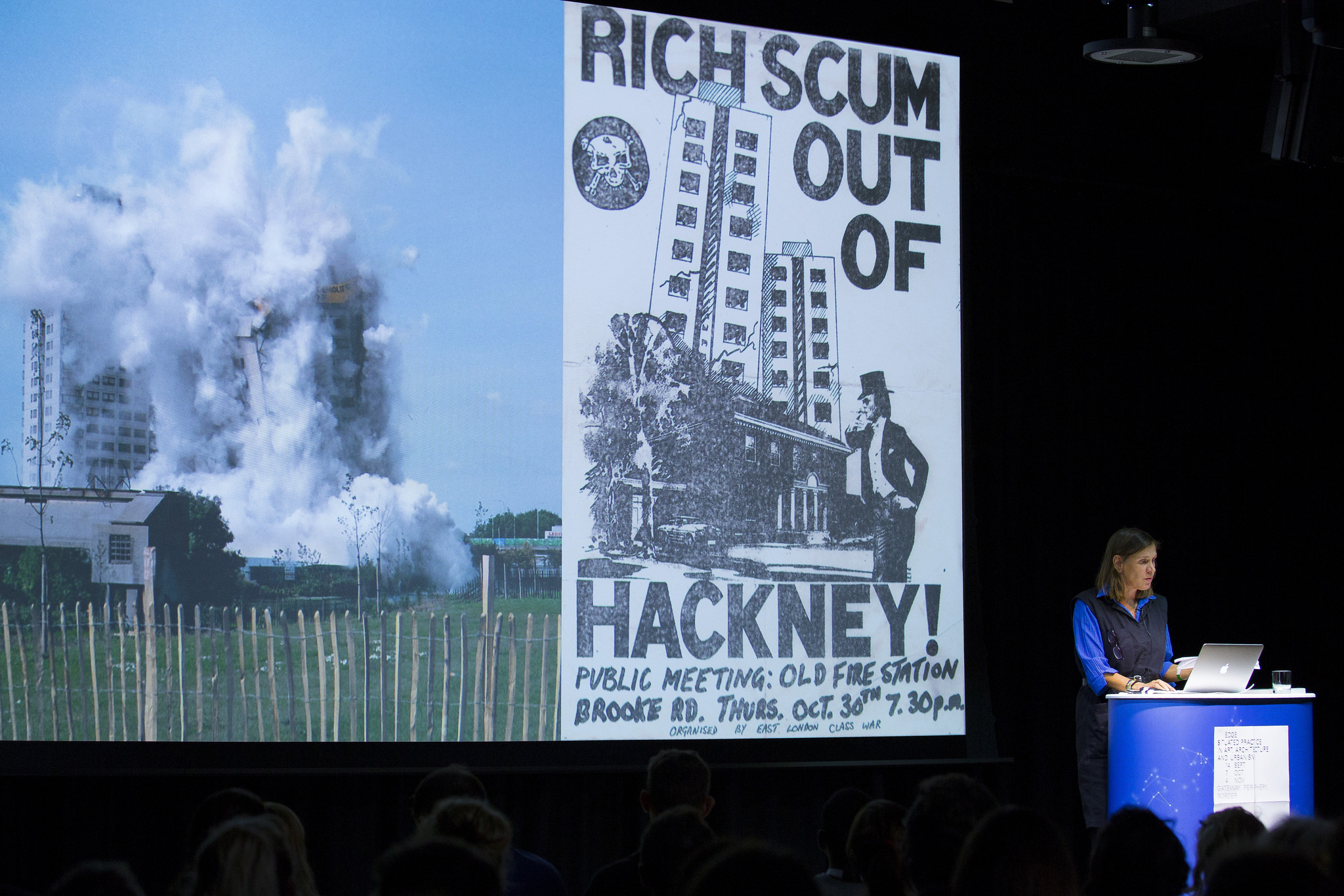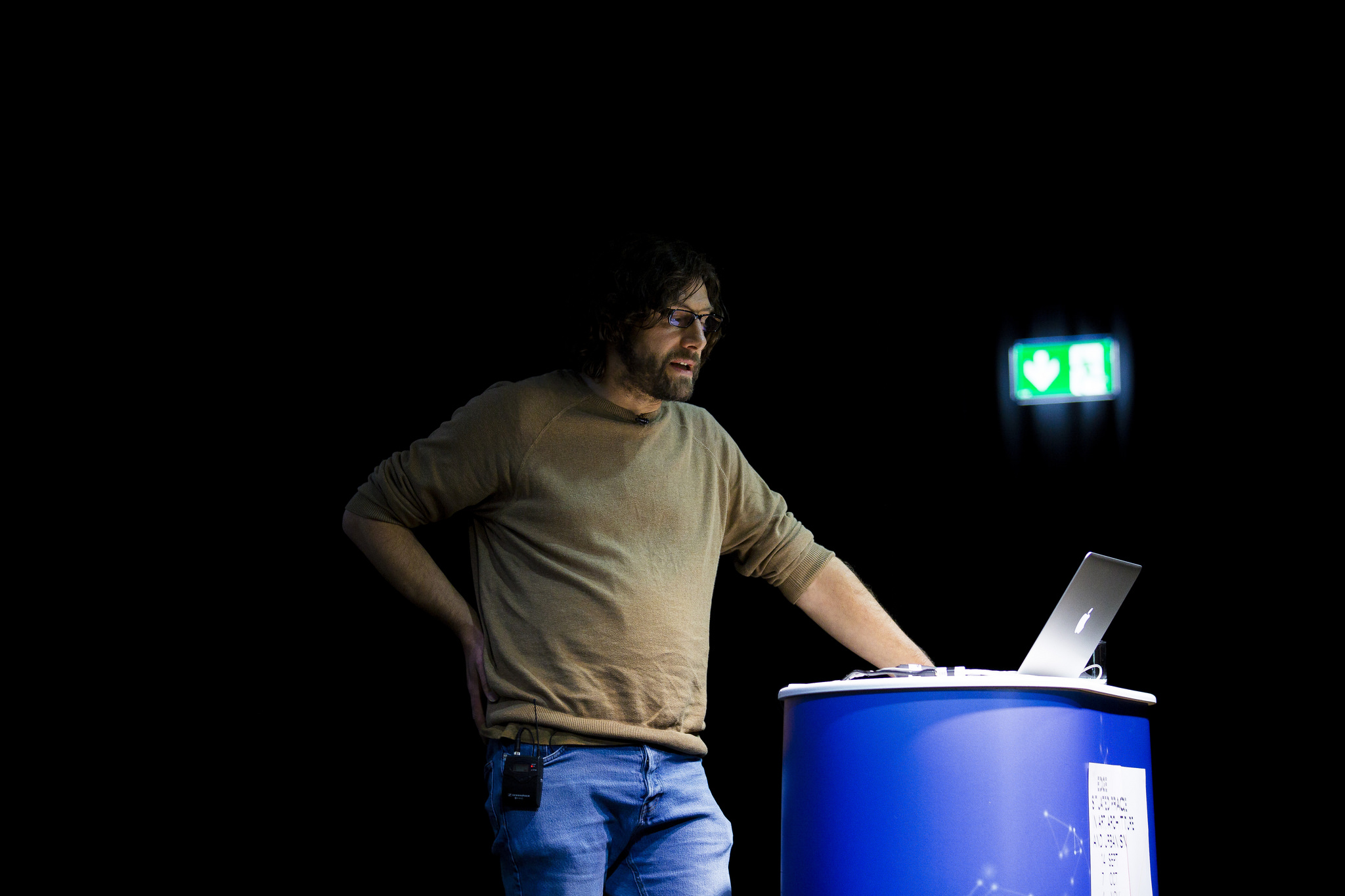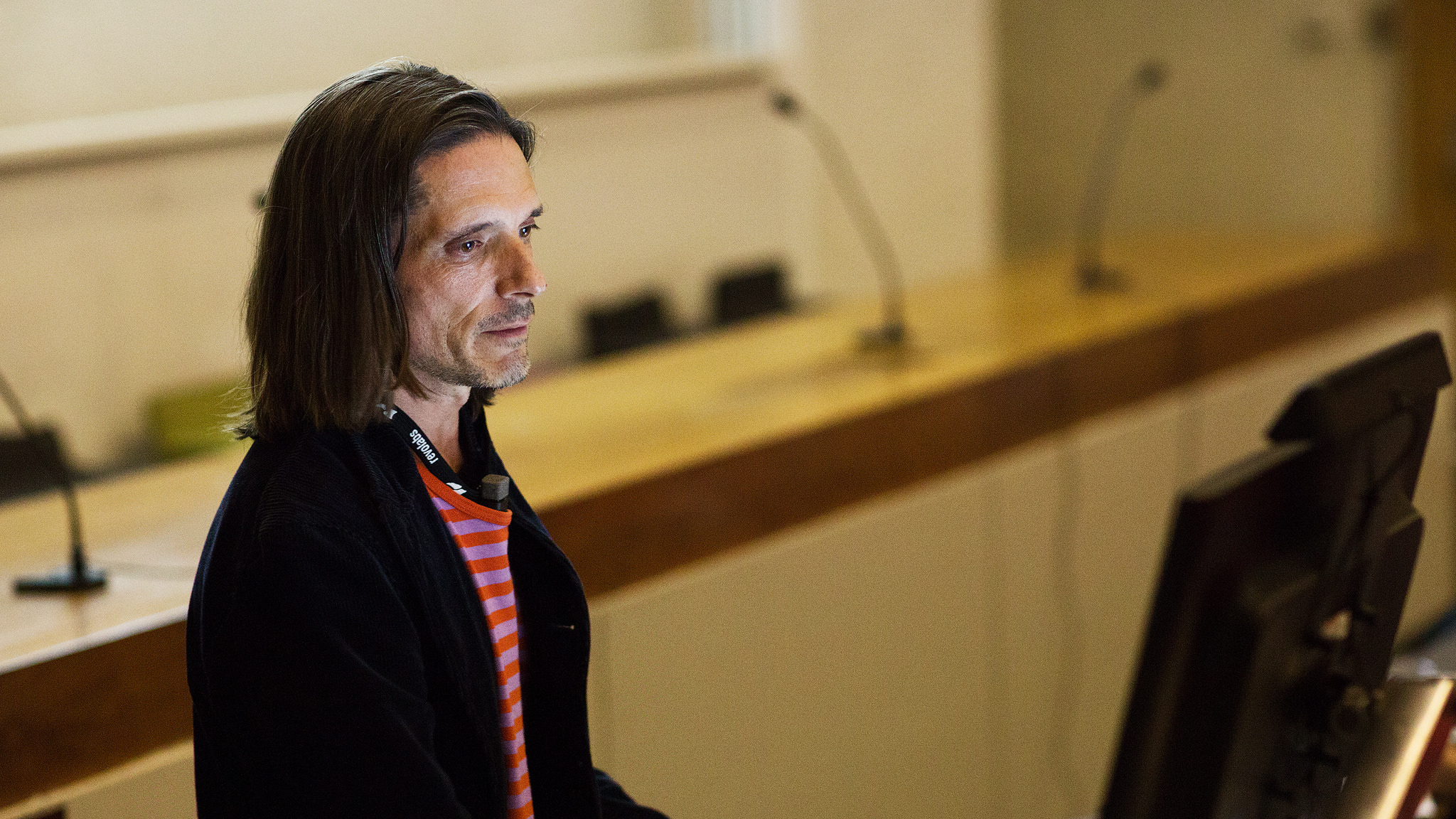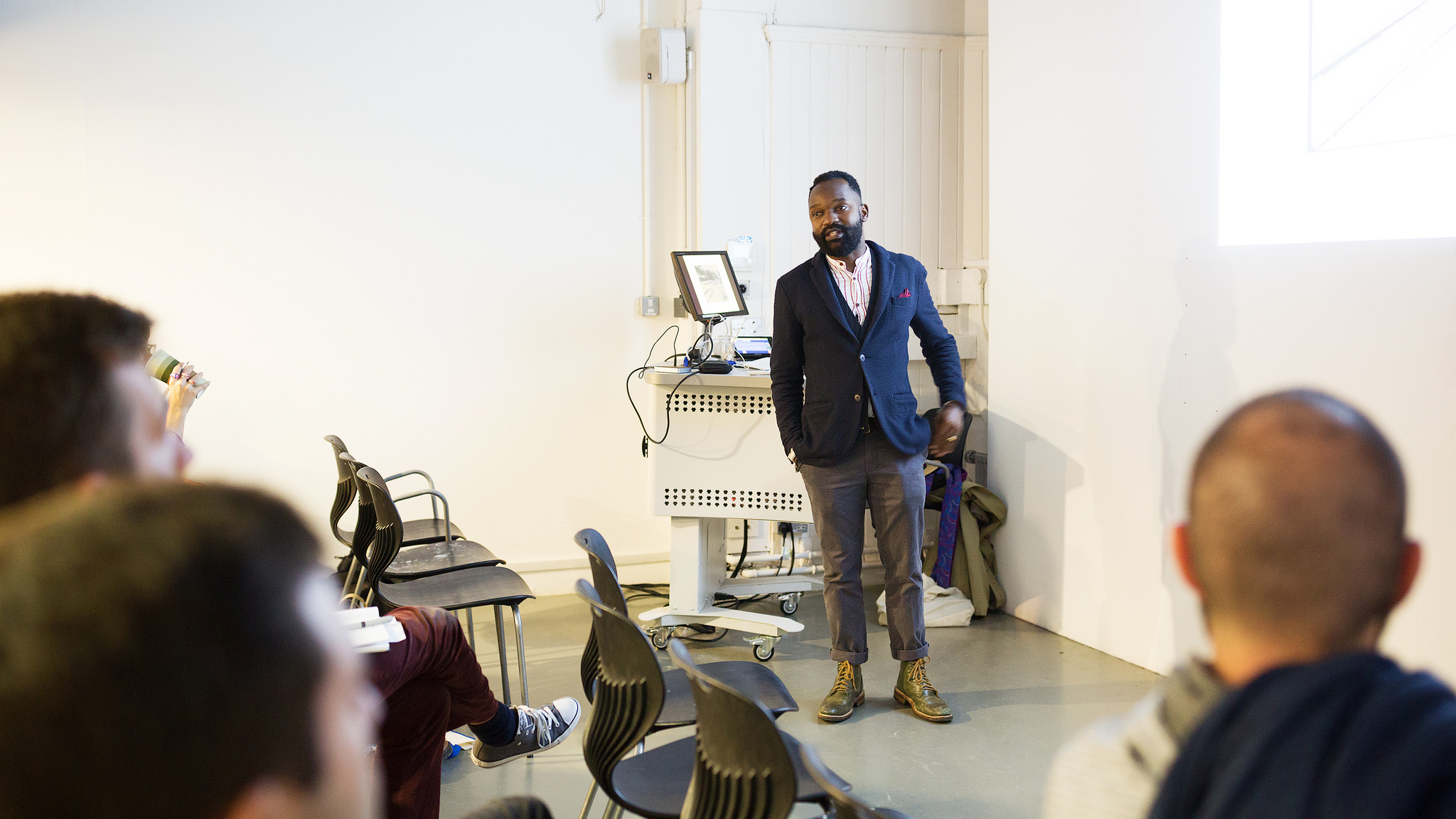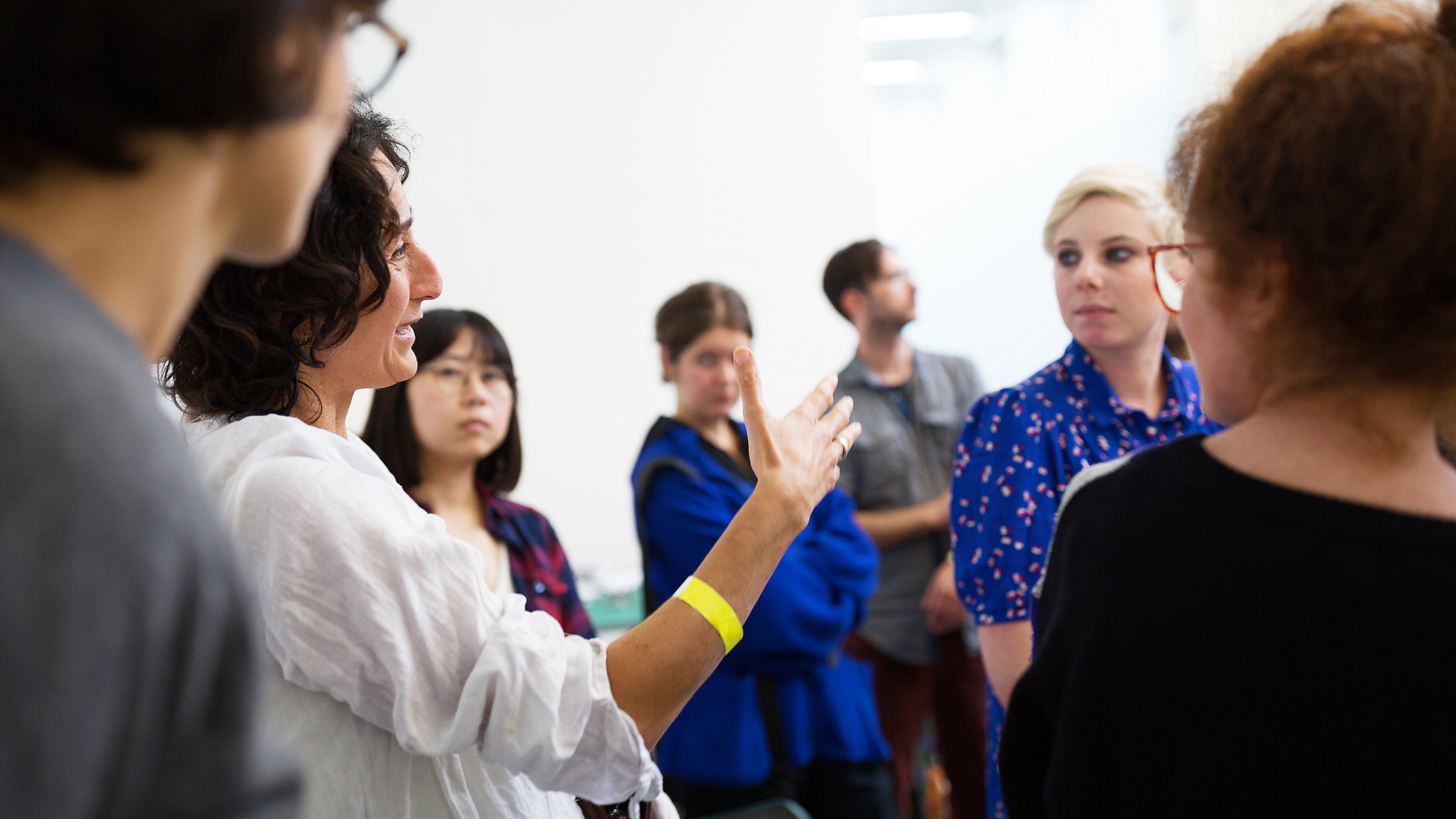Events
FINAL REVIEWS 2022
Our ‘Displacements’ event is scheduled for Wednesday October 12th, 2022 from 9am.
We will review all graduating student ‘Major Projects’ with some invited guests and evaluate the relative positions of each project, across a broad field of relations.
The Major Project module is based around the preparation of an original piece of situated practice in the form of a live intervention into a site or sites. This work is documented throughout in a portfolio; reflected upon through an artist’s book and a situated video; and finally remade in an exhibition. The aim of the module is for students to be able to produce a unique work of situated practice, which responds to a specific site or sites, in form as well as content.
All welcome. See you there!
STUDIO VISITS
28th Jan / Ambrose Gillick
Ambrose is an architect and writer, notable for his highly engaged, practical work with communities in post-industrial cities, with a PhD completed in 2013 looking at the co-production of architecture in post-earthquake Gujarat. He was co-director of the Glasgow based, community-based architecture practice, Baxendale for three years as was the lead curator of the Scottish Pavilion at the Venice Biennale in 2018. He also runs the podcast, A is for Architecture, and is the lead researcher for an interdisciplinary group looking at coastal poverty in the South East of England.
4th Feb / Brian Rosa
Brian Rosa is an urban geographer who uses photography as a method for historical, contextual and social research. He works predominantly at the interface of urban and industrial infrastructures. He's the co-editor of Deconstructing the High Line and Tatters of the Map, and has worked in and published some very notable projects including Palimpsesto Urbano on Mexico City, Ode to Power Lines with Adam Rider and Rebuilding the 9th Ward on NOLA.
11th Feb / Cristina Fraser and Agnes Essonti
Cristina Fraser and Agnes Essonti are both members La Fundicio, a disruptive, highly social and community orientated arts collective based in L'Hospitalet, bordering on Barcelona. Agnes is a photographer and artist of Cameroonian/Spanish heritage, who works with food and image as a way of intersecting and understanding inter-raciality and cultural diaspora. Cristina is a British artist living in Spain who works with children and in public space.
Andrés Saenz de Sicilia
Andrés Saenz de Sicilia a British-Mexican composer, sound artist/performer and lecturer (b. 1985). He holds a PhD from the Centre for Research in Modern European Philosophy, Kingston University London and currently teaches at Central Saint Martins, University of the Arts London. His works and performances have been featured in programs at the British Museum, Victoria & Albert Museum, Café Oto, Whitechapel Gallery, Museo d'Arte Contemporanea di Roma, Villa Lontana, Flat Time House and ZKM Center for Art and Media, Karlsruhe. He has released music both under his own name and as Pataphysical (together with Camilo Tirado and Matt Linares) on record labels including 12th Isle, Good Morning Tapes and Villa Lontana Records.
Jerzy Seymor
Jerzy is a highly prolific industrial designer, artist and teacher. Jerszy "sees design as the creation of situations whose goal is the transformation of reality.. with his role as a designer as research into contemporary utopian possibilities and alternative world-building strategies" He's created wild, immersive and improvised installations and galleries all around the world, and he runs the Dirty Art Department, a radical masters program in art and design, at the Sandberg Institute in Amsterdam.
THE SCREENING ROOM
The Bartlett Screening Room is a new forum to screen short films and artist moving image works in virtual space across lockdown. These screenings are designed to support the 'Mediated Environments' Module on MA Situated Practice. Projects are international in scope, all set out to address vital questions around critical urbanism, using film as a testing site. Core themes - beginning with the topic of ACTIVATING THE ARCHIVE - will be explored through a rolling program and collective viewing will be followed by a Q+A with artist/filmmakers. We will gather in virtual space on Wednesdays (bi-weekly) in the London lunchtime golden hour to allow us to be joined by students and publics from Bogota, to the Bartlett, to Beijing. Watching together, talking together, thinking together.
The Bartlett Screening Room is a collaboration from Henrietta Williams, an artist/researcher based at the Bartlett School of Architecture, and Oliver Wright, programmer of Open City Documentary Festival.
Please register for this event and before every screening we will send you a short description of each film before the session and the joining link to join the Zoom on the day of the screening for all the listed screenings.
This Eventbrite page will be updated weekly with the titles of the films that will be shown along with a short description.
Follow the bartlett_screening_room Instagram page for more regular updates.
Session run bi-weekly on Wednesdays 13.00-1400 (GMT)
https://www.eventbrite.co.uk/e/the-bartlett-screening-room-tickets-135717515743
REFRACTED SITES
Refracted Sites
Bloomsbury Festival
16th - 25th October, 2020
Refracted Sites presents a selection of projects from the Critical Spatial Practice: Site-Writing module, part of Architectural History and Situated Practice MA programmes at The Bartlett School of Architecture, UCL. ‘Site-writing’(Rendell, 2010) takes into account the embodied experiences of the writer, along with the histories and physicality of the spaces they explore.
In the physics of light and vision, refraction refers to the change in direction of a wave as it passes from one medium to another. In March 2020, the Site-Writing group planned works that critically engaged with local sites: museums, historic houses, in-between spaces, and contested planning in cityscapes. As Covid19 emerged, the group “refracted,” dispersing across time zones, geographies and virtual realities.
Refracted Sites presents these works, bringing them back together to be shared with an online community, while asking questions of the meaning, place, reality, time, scale and media for art in our Covid19 and post-Covid19 world. The works have refracted through time, with in, between others, out of production, across language, and out of place. Each type of refraction will form one episode of the exhibition. The exhibition will show online works —moving-image, virtual stories, audio accounts, digital sculptures— that negotiate the difficulties of positioning oneself creatively within a moment of crisis.
SITUATED PRACTICE - Critical Research Service
11:00-14:00. Saturday 16 March.
Royal Academy of Arts. Piccadilly. W1J 0BD.
The CRITICAL RESEARCH SERVICE is a project that embodies the boundaries between art and architecture. Our services offer a range of temporary activations that test alternative modes of engagement and consider the restrictions of both site and situation. We look, we twist, we invert, we listen, we reveal, we hover, we notice and we question, aiming to re-negotiate and critique power relations between the public, the space and the institution.
Today, we work through three `acts ́ to produce and create new spaces, relations and experiences at the Royal Academy. We start at the external borders of the building, move towards the central corridor and end in the center of the RA. This exercise tests the internal and external boundaries of the public and private domains. During these three acts we transform and reconfigure our own formation in response to the temporal and spatial conditions of the site.
11:00 to 12:30: ACT 1, A CHOREOGRAPHED ARRANGEMENT
At either entrance of the building a series of postcards direct and inform dispersed activations and performances across the RA and aim to reveal, recognise and reprogramme specific spaces.
12:30 to 13:00: ACT 2, ANOTHER ISLAND IS POSSIBLE
In movement along the central corridor towards the center of the RA, we perform a procession in celebration of our own collectivity. Through a spoken manifesto we navigate the space in an attempt to reveal and understand what unites and divides us.
13:00 to 14:00: ACT 3, DON’T WASH YOUR DIRTY LAUNDRY IN PUBLIC
Our final act exposes an internal discussion conducted between the team in the private setting of the Lovelace courtyard, to be viewed through the overlooking window. This action questions our own position and privilege to be here and aims to reveal and reflect upon the distance between artists and the public within the cultural institution.
Situated Practice — Live
13:00-18:00. Friday 14 December.
Bartlett Architecture. 22 Gordon St.
During six live moments, students' work and research becomes activated, and visitors can witness performances, hear readings, share stories and participate in workshops and discussions.
This event is free to attend and open to all. Visitors are welcome to drop in for one or many live sessions throughout the afternoon.
13:00-14:00 Kai-Wen Chen, Given Table
Given Table is a performative event that engages with issues concerning food and cultural politics in scenes transposed from the everyday life of restaurants. Invited participants from the food industry engage with the delivery of assigned tasks relating to the preparation and consumption of meals. Post-performance there will be an opportunity for an informal Q&A.
14:00-14:45 Rafael Guendelman Hales, Objects removed for study — A reading of the tablets
Take part in a discussion exploring the representation of Iraqi heritage. Invited guests include historian Professor Eleanor Robson, UCL, an expert in cuneiform (early writing) and Iraqi Heritage; Nadia Faydh, an Iraqi researcher writing a book related to migrant Arab women in western countries; and Fawzia Alwaji, a member of the Iraqi Community Association of London.
14:45-15:00 Martina Fernanda Amato, La Memoria Famigliare / The Familial Memory
You are invited to hear a poetry reading in both English and Italian.
15:00-15:45 Mélia Beaudoin, Asking For It
Come and share your street harassment stories and participate in the creation of a collective artwork. All genders welcome because this not just a women's issue!
15.45-16.00 Pranati Satti, Live The Life You Have Always Imagined
Live The Life You Have Always Imagined brings out issues with the way the building industry is being marketed today through audio tours and walking books. Watch a short excerpt of the tour and pick up a brochure to find out more!
16.00-16.45 Anastasia Balykina, Metropolis Arcana — Let’s Predict the Bartlett’s Future
Through this site-prediction we will discover potential changes to The Bartlett School of Architecture. From her tarot stall, the character of Annabel will read the future of the area from her special Metropolis Arcana. Anyone working or studying in this area, and interested in its future should come along and engage with this performance.
16.45-18.00 Situating Practices — a discussion of concepts and cartographies with invited guests
Join staff and students to critically consider the cultural history and political geography of the terms, concepts and practice underpinning Situated Practice, including architecture, art, books, concepts, dates, events, keywords, locations, moments, people, sites, thematics, typologies, urbanism, works, and materials extracted from course bibliographies (written by staff), project definitions (written by students), and phrases from our Un-fixed Manifieste (written together).
Richard Mosse in Conversation
18:30-20:00. Monday 12 November.
Bartlett Architecture, Here East.
The Irish photographer Richard Mosse presents recent work including the series Heat Maps, made using a military camera that is classified as a weapon under international law.
The hi-tech surveillance device, designed to detect body heat from a distance of over 30km, was used by Richard to track the journeys of refugees from the Middle East and North Africa. The result is a series of large-scale prints that reconfigures the refugee crisis as a spectral, almost sci-fi drama of human endurance and survival. He has also produced an acclaimed film, Incoming from the result of the project.
The Castle is a meticulous documentation of refugee camps and staging sites located across migration routes from the Middle East and Central Asia into the European Union via Turkey. The Castle draws attention to the provisional architecture of refugee camps – the barbed fences, security gates, portaloos, loudspeakers, food queues, tents and temporary shelters. The sequence of the book, which is divided into 28 sites, presents panoramic and close-up images underling the various ways in which each camp interrelates with, or is divorced from, adjacent citizen infrastructure – marginalised, concealed, overlooked, integrated, dispersed, regulated, militarised.
The publication does not attempt to represent the refugee crisis in a seemingly “transparent” or objective way. Instead, it prompts question about the “visibility” of refugees and the erosion of their human rights. Richard's images, which read heat as both metaphor and index, ask us to think about the current conditions of refugees through ideas of hypothermia, exposure, climate change, biopolitics, and mortality.
Following the presentation Richard will be in discussion with James O’Leary, Programme Director - Situated Practice MA, The Bartlett School of Architecture, UCL.
The Castle is published by Mack books and will be available to purchase after the event.
Bloomsbury Festival: Activism and Architects of Change
18:00-21:30. Saturday 20 October.
Bartlett Architecture, 22 Gordon Street.
Hear new stories performed that take an activist approach to the urban environment, and explore how we identify with the city and how spaces are used. There will be a chance to ask questions and share experiences with the storytellers.
Visit a selection of projects from the Critical Spatial Practice: Site-Writing module, part of Architectural History and Situated Practice Masters programmes, part of The Bartlett. A series of artist's books will be on display and performative readings that explore a practice-based approach to storytelling and criticism will be performed live. Site-writing takes into account the experiences and understanding of the writer, along with the histories and physicality of the space.
The student works exhibited and performed comprise ten site-specific works by the 2018 cohort that can be read, heard, observed, and discussed in the context of the festival's theme, Activists and Architects of Change.
Constructing Realities:
Sasha Engelmann and Jol Thomson
18:30-20:00. Thursday 11 October.
Bartlett Architecture, Here East.
Geographer Sasha Engelmann and artist Jol Thomson discuss their collaborative teaching practice with Studio Tomás Saraceno and their participation in the Aerocene project - an activist initiative focused on shifting and inspiring human relations to consider the atmosphere and environment.
Sasha Engelmann is Lecturer in GeoHumanities in the department of Geography at Royal Holloway University of London. She collaborates with artists and creative practitioners to explore questions of environmental sensing and politics. Since completing her doctoral research as a creative ethnographer in collaboration with Studio Tomas Saraceno, she has become an active member of the Aerocene community.
Jol Thomson is a Canadian born, European based artist, writer, and sound designer. Both his written and audio-visual work challenge the limits and boundaries of spacetimematter(s). He collaborates very closely with some of the worlds leading neutrino and dark matter observatories. 'Exotic' physics, posthumanism, and general ecology - or the environmental and philosophical implications of 'landscape-laboratories' in the age of the Anthropocene - are the focus of his practice-led PhD at the University of Westminster.
Is Critical Regeneration Possible?
10:00-17:00. Wednesday 10 January.
Bartlett Architecture, Here East.
Walks, presentations and discussions asking if critical regeneration is possible.
10:00-11:00 - launch of Open Work (MASP) module with Jan Kattein Architects and Jessie Brennan (artist)
11.30-13:00 - walk around the area with artist Alberto Duman
14:00-15:00 Alberto Duman - talk about his practice in the area and new book project Regeneration Songs, followed by questions.
15:30-16:15 Torange Khonsari and Tom Dobson (Public Works) followed by questions
16:15-17:00 Presentation from artist Hilary Powell, followed by questions
17:00-18:00 Discussion ‘Is Critical Regeneration Possible’ with Alberto, Hilary, Public Works, and Anna Harding (SPACE), Sam Wilkinson (UCL Public Art Manager, UCL Culture), Dr Ben Campkin and Dr Claire Melhuish (UCL Urban Lab) and architect Sol Perez Martinez (researching the history of urban and civic rooms) to join.
Constructing Realities: Dorita Hannah
18:30-20:00. Thursday 7 December.
Bartlett Architecture, Here East.
Performing the Abjectile
Dorita Hannah is Research Professor of Interdisciplinary Architecture, Art & Design at the University of Tasmania (Australia) and Adjunct Professor of Stage & Space with Aalto University (Finland). Specialising in Performance Design, her practice-led research focuses on designing and curating live events, installations and exhibitions, as well as expertise in theatre architecture.
She co-chairs the Performance+Design Working Group for PSi (Performance Studies international), sits on several editorial boards, and has created exhibitions and events for the Prague Quadrennial as design director, architectural commissioner and theory curator. Concentrating on performance space and spatial performativity, Dr. Hannah is completing Event-Space: Theatre Architecture & the Historical Avant-Garde, to be published by Routledge Press (2017).
Constructing Realities: Barbara Holub
18:30-20:00. Thursday 23 November.
Bartlett Architecture, Here East.
Artist and architect Barbara Holub will present projects working with the method of "direct urbanism" – a method that transparadiso has developed for a socially and societally engaged urban development, which involves art and artistic strategies as integral elements.
"As we stated in the publication "Direct urbanism" (Verlag für moderne Kunst, 2013), Direct urbanism (DU) advocates direct urban intervention, and involves users, residents, decision-makers and other agents of the city in performative settings. DU develops site- and context-related tools as well as new methods that integrate artistic and unconventional practices into the durational process of urban planning. DU tries to counteract the dichotomy of top-down and bottom-up planning, and explores exactly when experts and local specialists should become involved. DU acts transdisciplinarily, pursuing research through practice – in an open process.
The following questions are important:
– How can artists and artistic practices maintain their critical voice and (yet) be considered experts on an equal level to other experts like urban planners or sociologists?
– How can artistic urban practices contribute to establishing new societal values enhancing common acting and counteracting urban development primarily based on neo-liberal decision-making?
But the role art plays in the context of our urbanistic projects consists of a range of different "functions". In addition to projects for "direct urbanism", Barbara Holub will show how an art project/urban intervention can trigger the "production of desire", serving as a tool for developing innovative urbanistic programs. And in the end she will present current architecture project, a new urban quarter in Vienna ('Quartier Bienvenue'), and talk about how a trilogy of art projects has served as "research through practice" for developing this societally engaged project for new forms of living together."
Barbara Holub is an artist, architect, researcher, based in Vienna. In 1999 she founded transparadiso with Paul Rajakovics (architect, urbanist) as a transdisciplinary practice in between urbanism, art and architecture, between practice and theory. transparadiso’s practice focuses on the method of “direct urbanism”, which means involving artistic strategies for a socially engaged and process oriented urban planning.
Barbara Holub was external expert for direct urbanism and visiting artist at the Dept. of Social Design (2014-2016), visiting professor at TransArts (2015), University of Applied Arts Vienna. She lectures at the Vienna University of Technology, where she also directed the research project "Planning Unplanned – Towards a New Positioning of Art in the Context of Urban Development" (2010-2013).
Barbara Holub was president of the Secession, Vienna (2006–2007), member of the jury of Public Art Lower Austria (2005-2007), and is a member of the advisory board of World Council of Peoples for the UN.
Recent publications: Barbara Holub (ed.) Das Bienvenue: Ein Recht auf Raum für alle (2016), transparadiso (Barbara Holub/ Paul Rajakovics) Direct Urbanism, Verlag für moderne Kunst (2013); Barbara Holub/ Christine Hohenbüchler (eds.) Planning Unplanned–Can Art Have a Function? Towards a New Function of Art in Society, Verlag für moderne Kunst (2015).
EDGE 3: Border
09:00-17:30. Saturday 3 November.
Quarterhouse, 49 Tontine Street, Folkestone.
Friedrich Ludewig, The Decorators, Diane Dever, Stroom, and Charles Quick are among the speakers at this event exploring situated practice, contemporary art, architecture and urbanism.
'Border' is the final event in a three-part series with Folkestone Triennial 2017 to bring together practitioners and thinkers at three 'edge' locations connected by the High Speed 1 railway, to consider creative place-making, arts-led urbanism, and the use of interstitial spaces in the city.
For the third and final event, we consider Folkestone. At the littoral edge of southeast England, its urbanism connect equally with water and land. From 1842 to 1992 it was the main pivot for passenger transport between France and England, and with the more recent construction of HS1, Folkestone has been gifted the questionable status of dormitory suburb to the Capital.
You can view the full programme here (pdf).
Keynote: Friedrich Ludewig
Other speakers: Lewis Biggs, Lesley Hardy, Darrell Rohl, Caroline Caicedo (The Decorators), Diane Dever, Stroom, Charles Quick, Jonathan Ward, JJ Charlesworth, Princess Marilyn Douala Manga Bell, Sorcha Carey and Anthony Downey.
The series is organised by the UCL Urban Laboratory and Folkestone Triennial 2017, with additional support from the Slade School of Fine Art, UCL and The Bartlett School of Architecture, UCL.
Constructing Realities: Victor Burgin
18:30-20:00. Thursday 26 October.
Bartlett Architecture, Here East.
Some Types of Specificity
There are two components to my Constructing Realities talk. The first component is a critical essay, ‘Architecture and the uncinematic’, which is provided in pdf form in advance of my talk. The paper, first presented in 2010, addresses the question:
What might it mean today to represent architecture in terms of cinema when the terms of cinema have been changed by the same computer technologies that have transformed architecture?
For the second component, the live talk, I shall present one of my projection works, A Place to Read, also produced in 2010. The work was first shown in the context of the cultural festival Istanbul 2010: Cultural Capital of Europe. At its centre is the Taslik coffee house and garden, designed by Sedad Hakki Eldem, built between 1947-48, and in 1988 converted into a restaurant for a luxury hotel, with its garden turned into a car park.
My 2010 essay and artwork together form a ‘historical object’ offered for consideration from the standpoint of today. In 2010, to fit my text to the time frame of a lecture, I moved some material into appendices to be made available when the paper was distributed. There are three appendices in the pdf provided: the first refers to architectural design courses based on cinematic models; the second remarks on the relations of architecture and cinema to politics; the third comments on the idea of ‘interactive cinema’. In presenting A Place to Read I shall offer a fourth appendix, expanding upon issues of ‘site-specificity’ raised both in my essay and in descriptions of the new Master's programmes at The Bartlett.
Victor Burgin is a British artist and writer who lives in France. He is Professor Emeritus of History of Consciousness, University of California, Santa Cruz; Emeritus Millard Chair of Fine Art, Goldsmiths College, University of London; and Professor of Visual Culture, Winchester School of Art, University of Southampton. In 2015 Burgin was Visiting Professor in the Department of Cinema and Media Studies at the University of Chicago, and in 2016 was a Mellon Fellow at the University of Pennsylvania. Burgin’s theory books include Parallel Texts: interviews and interventions about art (2011), Situational Aesthetics (2009), The Remembered Film (2004), In/Different Spaces: place and memory in visual culture (1996), The End of Art Theory: criticism and postmodernity (1986) and Thinking Photography(1982).
The most recent book about his visual work is Stéphane Symons and Hilde Van Gelder (eds.), Victor Burgin’s Parzival in Leuven: Reflections on the “Uncinematic”, Leuven, Leuven University Press, 2017. Other monographs include Scripts (2016) and Projective (2015), both published by MAMCO, Geneva; Five Pieces for Projection (2014), Sterberg Press; Components of a Practice (2008), Skira: and Victor Burgin: Objets Temporels (2007), Presses Universitaires de Rennes. Burgin’s still and moving image work is represented in public collections that include the Los Angeles County Museum of Art; Metropolitan Museum of Art, New York; Museum of Modern Art, New York; The Tate Modern, London; Museum Ludwig, Cologne, and the Centre Georges Pompidou, Paris.
EDGE 2: Periphery
10:00-19:30. Saturday 7 October.
Plexal, 14 East Bay Lane, Here East.
Jill Magid, Do Ho Suh and Assemble are among the speakers at this event exploring situated practice, contemporary art, architecture and urbanism.
'Periphery' is the second event in a three-part series collaboration with Folkestone Triennial 2017 to bring together practitioners and thinkers at three 'edge' locations connected by the High Speed 1 railway, to consider creative place-making, arts-led urbanism, and the use of interstitial spaces in the city.
For the second event, we consider the environs of the Queen Elizabeth Olympic Park. Investment for the 2012 Games brought rapid development to the previously neglected Stratford area. Here East, within the former press and broadcasting centre of the Games, is envisaged as a cluster of innovators and digital makers, whilst the Stratford Waterside development will bring new institutions including the V&A, Sadler's Wells, London College of Fashion, and UCL.
You can view the full programme here (pdf).
Keynotes: Jill Magid and Do Ho Suh
Other speakers: Assemble, Jan Boelen, Jane Rendell, Kreider + O’Leary, MUF, Oreet Ashery, Public Works, SPACE, and Stephen Pritchard
The series is organised by the UCL Urban Laboratory and Folkestone Triennial 2017, with additional support from the Slade School of Fine Art, UCL and The Bartlett School of Architecture, UCL.
EDGE 1: Gateway
10:00-19:30. Thursday 14 September.
The Slade School of Fine Art, Gower Street.
Jeremy Deller is keynote speaker at this event exploring situated practice, contemporary art, architecture and urbanism.
'Gateway' is the first in a three-part series collaboration with Folkestone Triennial 2017 to bring together practitioners and thinkers at three 'edge' locations connected by the High Speed 1 railway, to consider creative place-making, arts-led urbanism, and the use of interstitial spaces in the city.
For this first event, we consider Bloomsbury and King's Cross as 'edge' locations. The Gower Street campus of UCL was planned and built on the urban/rural edge of nineteenth-century London, a ‘learning’ gateway through which generations of students have now passed, and one which now runs up against the King’s Cross development, conceived as a mix of ‘knowledge’ and ‘transport’ gateways.
You can view the full programme here (pdf).
Keynote: Jeremy Deller
Lectures: Marjetica Potrč and OOZE, Matthew Beaumont, Jan Kattein, and Rebecca Ross
Masterclasses: Samson Kambalu, Gary Woodley, Florian Roithmayr, Leah Lovett, and Katy Beinart
The series is organised by the UCL Urban Laboratory and Folkestone Triennial 2017, with additional support from the Slade School of Fine Art, UCL and The Bartlett School of Architecture, UCL.
